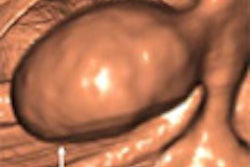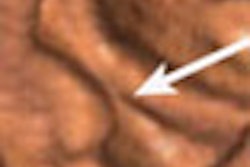AGRA - It is premature to endorse widespread sonographic screening for breast cancer, according to a presentation at the 58th annual congress of the Indian Radiological and Imaging Association (IRIA). Film-screen mammography continues to be the reference standard despite its limitations.
"If sonography is used for breast screening, it should be considered a supplement to screening mammography at this time," said Dr Subhash K. Ramani, an assistant professor and assistant radiologist from Tata Memorial Hospital in Mumbai, in his presentation at the IRIA conference on Monday.
Sonography has been successful in cancer screening for dense breast tissue, said Ramani, citing published literature. However, a woman choosing breast sonography screening should be aware that the results are dependent on operator skill and that additional testing may be required.
"Two to six women undergoing screening sonography will require breast aspiration or biopsy. Even if both sonography and mammography are performed, there is still a 2% to 4% chance that cancer may not be detected on imaging," he said.
The critical issue in sonographic screening for breast cancer is whether or not it will reduce mortality rates, Ramani noted.
Randomised control trials have conclusively proved population screening by mammography for women between 50 and 65 years could, with early detection, reduce mortality by 20% to 30%. However, randomised control trials were not yet available to substantiate whole-breast sonography screening.
Quoting from a consensus statement by the European Group for Breast Cancer Screening, Ramani said there was little evidence to support the use of US in population breast cancer screening for woman of any age.
The American College of Radiology also does not have recommendations for screening with nonmammographic imaging techniques.
"Though breast US has excellent contrast resolution, it lacks the spatial resolution of conventional mammography, and therefore it is not approved by the FDA (Food and Drug Administration) as a screening tool for breast cancer," he said.
While breast US is most appropriate in the evaluation of a mass in a woman under 30 years, the earliest type of breast cancer, confined to the ducts of the breast, is usually seen much better on mammography, he concluded.
By N. Shivapriya
AuntMinnieIndia.com staff writer
January 24, 2005
Copyright © 2005 AuntMinnie.com



















